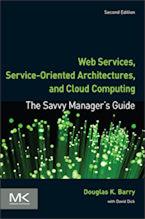Using Existing Relational Schema
This section shows one way to use an existing relational schema to create an object schema. Key points are:
- Ways to use type codes and relational views to get ideas about the object class hierarchy.
- A step-by-step example of converting a relational schema to an object schema and checking to ensure no information is lost in the process.
- Adding method code that was not in the relational schema to the object schema.
To view the steps for this technique in order, just follow the link that appears below and on each of the pages in this section. You can also skip around by using the menu choices that appear at the bottom of each page.
You may notice that the notation is somewhat different from current UML diagramming. These diagrams were created prior to the latest UML diagramming conventions. Nevertheless, the meaning in the diagrams should be obvious.
For more information on this technique, see The Object Database Handbook, which is the source of these diagrams.
Type codes. Also see the related content below.
More Detail on Using Existing Relational Schema
Context for Using Existing Relational Schema
Related Articles for Using Existing Relational Schema
The Savvy Manager's Guide
Douglas K Barry is also the author of a book that explains Web Services, service-oriented architecture, and Cloud Computing in an easy-to-understand, non-technical manner.
Web Services, Service-Oriented Architectures, and Cloud Computing: The Savvy Manager's Guide (Second Edition)
by Douglas K Barry with David Dick
This is a guide for the savvy manager who wants to capitalize on the wave of change that is occurring with Web Services, service-oriented architecture, and—more recently—Cloud Computing. The changes wrought by these technologies will require both a basic grasp of the technologies and an effective way to deal with how these changes will affect the people who build and use the systems in our organizations. This book covers both issues. Managers at all levels of all organizations must be aware of both the changes that we are now seeing and ways to deal with issues created by those changes.

